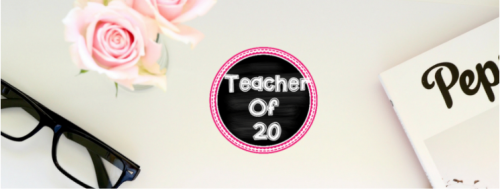 Meet Stephanie, the teacher behind School House Rap with over 20 years of experience and enjoys creating picture book companions. She's a picture book fanatic and loves using them to teach her elementary and middle school students. In fact, she's been known to break out with a spontaneous rap in the classroom, using picture book characters as her inspiration.
Don’t worry; she won’t quit her day job.
Understanding cause and effect is a critical skill in children learning to process the world around them. From recognizing that pushing a toy will make it move to understand that studying for a test can result in higher grades, grasping the concept of cause and effect forms the basis for problem-solving, critical thinking, and scientific reasoning. But how can elementary school teachers make this abstract concept more tangible for their young students?
Let’s explore some engaging strategies to teach cause and effect to elementary students, making the learning experience educational and fun!
Meet Stephanie, the teacher behind School House Rap with over 20 years of experience and enjoys creating picture book companions. She's a picture book fanatic and loves using them to teach her elementary and middle school students. In fact, she's been known to break out with a spontaneous rap in the classroom, using picture book characters as her inspiration.
Don’t worry; she won’t quit her day job.
Understanding cause and effect is a critical skill in children learning to process the world around them. From recognizing that pushing a toy will make it move to understand that studying for a test can result in higher grades, grasping the concept of cause and effect forms the basis for problem-solving, critical thinking, and scientific reasoning. But how can elementary school teachers make this abstract concept more tangible for their young students?
Let’s explore some engaging strategies to teach cause and effect to elementary students, making the learning experience educational and fun!
- Start with Concrete Examples
- Use Visual Aids
- Use Hands-On Activities
- Encourage Text-Based Analysis
 Choose age-appropriate readings that clearly illustrate the concept of cause and effect. As a class, identify the actions that result in particular outcomes, and discuss other possible consequences if those actions differ. Encourage your students to pay close attention to textual clues that signal causal connections, such as “because” or “as a result.”
Choose age-appropriate readings that clearly illustrate the concept of cause and effect. As a class, identify the actions that result in particular outcomes, and discuss other possible consequences if those actions differ. Encourage your students to pay close attention to textual clues that signal causal connections, such as “because” or “as a result.”
 Here are a few picture books to use for Cause-and-Effect:
If You Give a Moose a Muffin (or any If You Give…book) by Laura Joffe Numeroff
Ish by Peter H Reynolds
On Account of the Gum Adam Rex
Here are a few picture books to use for Cause-and-Effect:
If You Give a Moose a Muffin (or any If You Give…book) by Laura Joffe Numeroff
Ish by Peter H Reynolds
On Account of the Gum Adam Rex
- Play Cause and Effect Games

- Encourage Journal Writing
- Scaffold Learning with Graphic Organizers
 If you want to see picture book recommendations for different reading strategies, you can check out School House Rap on Instagram @school_house_rap or Facebook. Sign up here for weekly freebies delivered to your inbox.
If you want to see picture book recommendations for different reading strategies, you can check out School House Rap on Instagram @school_house_rap or Facebook. Sign up here for weekly freebies delivered to your inbox.

Comments
Post a Comment